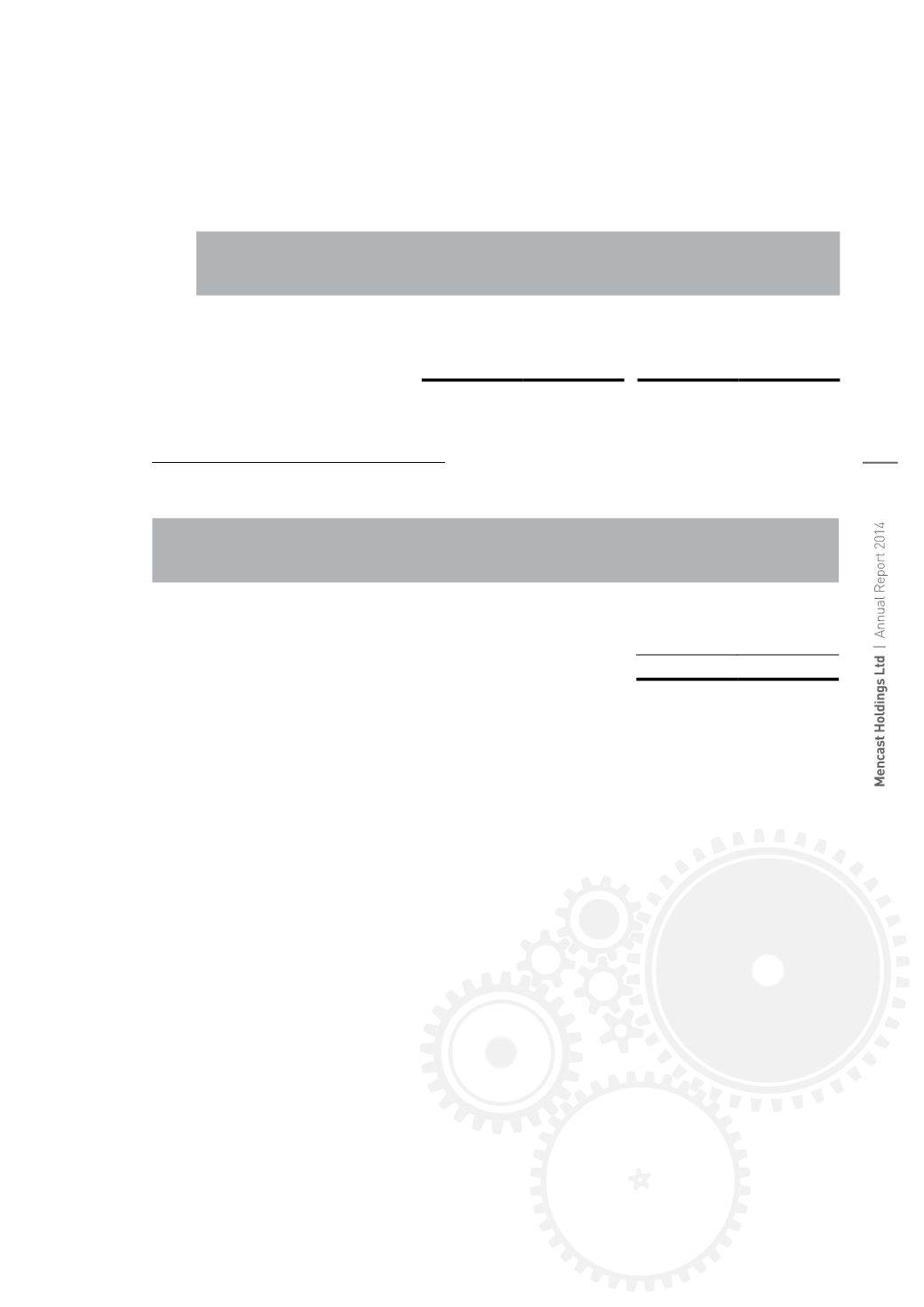
103
NOTES TO THE FINANCIAL STATEMENTS
For the financial year ended 31 December 2014
28.
Financial risk management
(continued)
(f)
Financial instruments by category
The carrying amount of the different categories of financial instruments is as disclosed on the
face of the balance sheet and in Note 15 to the financial statements except for the following:
Group
Company
2014
2013
2014
2013
$’000
$’000
$’000
$’000
Loans and receivables
103,541
79,946
85,665
42,076
Financial liabilities at amortised
cost
204,863
182,424
111,911
77,420
29.
Related party transactions
Key management personnel compensation
Key management personnel compensation is as follows:
Group
2014
2013
$’000
$’000
Wages and salaries
3,415
3,033
Employer’s contribution to defined contribution plans,
including Central Provident Fund
148
118
3,563
3,151
Key management personnel compensation includes directors’ remuneration amounting to
$1,475,000 (2013: $1,477,000).
30.
Segment information
The Management has determined the operating segments based on the reports reviewed by the
Board of Directors that are used to make strategic decisions.
The Group’s operating segments are its strategic business units which offer different services and
are managed separately. The reportable segment presentation is based on the Group’s management
and internal reporting structure used for its strategic decision-making purposes.
The Board of Directors assesses the performance of the operating segments based on revenue and
gross profit. Administrative and finance expenses, and other gains are not allocated to segments.
Segmental assets and liabilities are not monitored as majority of the assets and liabilities can be
utilised or discharged by different operating segments across the Group.
The Group’s activities comprise the following segments:
(a)
Marine
– Includes sterngear manufacturing and refurbishment works,
ship inspection, repair & maintenance services and engineering
& fabrication works. This also includes diving services.
(b)
Offshore & Engineering – Includes offshore structures, engineering, manufacturing,
inspection and maintenance. This also includes rope access
services.
(c)
Energy
– Includes oil sludge and slop reclamation, hydro cleaning oil and
gas tanks, encapsulation of wastes prior for landfill disposal
and design and launch carbon footprint management initiatives
and green initiatives.


